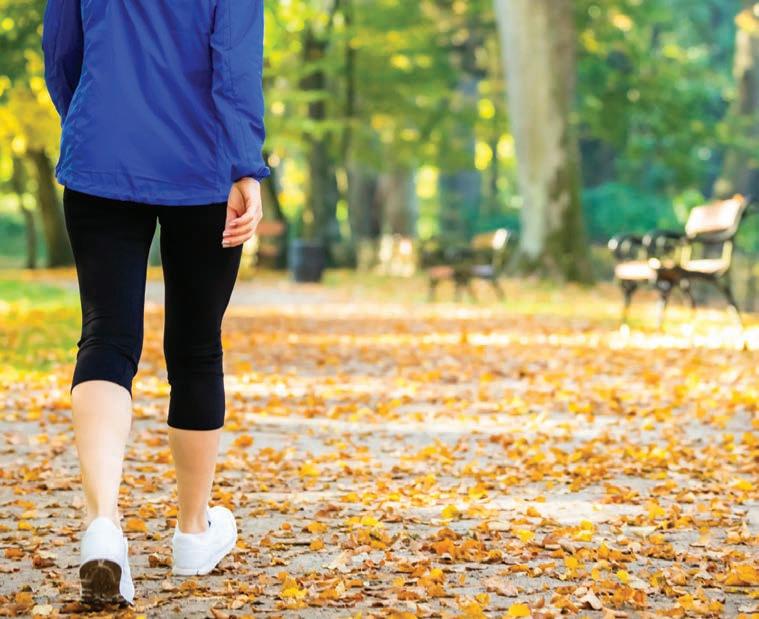
5 minute read
Health & Science

How chilling out can fuel anxiety
Advertisement
LEISURE is the prize, right? We work hard, so we want to play hard; we look forward to our time o , believing that the more leisure time we have, the better life will be. Enjoying that time – or savouring that coveted end goal – should come naturally.
However, according to a BBC report, research shows that both having and deciding how to spend leisure time can be very stressful. Some people feel enormous pressure to maximise their downtime with the best choices: researching more, anticipating and spending more money. But, as data prove, this pressure to maximise our fun might get in the way of our enjoyment of leisure itself.
Additionally, some people struggle to view leisure as worthwhile at all. ese individuals – often in high-stress, high-paying jobs – prioritise productivity to the extent that they can’t enjoy time o , often to the detriment of their mental health.
However di erent their problems with leisure, both groups struggle with enjoying time o for the same reason: the way we perceive and value leisure has changed, problematically. Understanding this evolution, and nding ways to change our attitudes, could be bene cial for everyone – and help people to start enjoying themselves again. e changing concept of leisure
“Leisure has dramatically evolved over the centuries and across cultures,” says Brad Aeon, assistant professor at the School of Management Sciences at the University of Québec in Montréal. “One thing that’s consistent about leisure, however, is that it has always been contrasted with work.”
Two-thousand years ago, concepts of work and leisure were associated with servitude and freedom, respectively. In Ancient Greece, explains Aeon, most of the labour was outsourced to slaves, while wealthier parts of society pursued other activities. “Leisure was an active state of mind. Good leisure meant playing sports, learning music theory, debating quali ed peers and doing philosophy. Leisure was not easy, but it was supposed to be gratifying.”
Aeon believes that a shift occurred when the Romans started viewing leisure as a way of recuperating in preparation for more work, a transition that accelerated signi cantly during the Industrial Revolution. By the 1800s, the kind of leisure that signi ed status had shifted, too; the wealthy led overtly idle lives. A popular example is philosopher Walter Benjamin’s description of the fashion, around 1893, to walk through arcades with a turtle on a leash.
Anat Keinan, associate professor of marketing at Boston University’s Questrom School of Business, has conducted extensive research on the symbolic value of time. She explains today we’re seeing yet another transition: a lack of leisure time now operates as a powerful status symbol. “On Twitter, celebrities ‘humblebrag’ about ‘having no life’ and ‘being in desperate need of a vacation’,” she points out. In the workplace, being part of the long-hours working culture is still seen by many as a badge of honour.
In fact, those with the most money to spend on leisure are most likely also putting in the longest hours. “Highly educated people (think surgeons, lawyers, CEOs) oRen go for well- paid jobs that require highly productive candidates willing to work long hours,” explains Aeon. “ is means that those who complain the most about not having enough free time are wealthy and educated.” at fuels the idea that we must maximise leisure’s ‘hedonic utility’, or enjoyment value, when we actually do get some time o – and make every hour count. e way we chase top-notch leisure experiences has made recreation more stressful than ever. High expectations may clash with our experienced reality, making it feel anti-climactic, while trying to concoct the best vacation or leisure experience ever can fuel performance and activity.

You can stay healthy with just 7,000 steps a day
MANY of us have smartwatches or apps on our phones that count the number of steps we do. Usually, we aim to reach at least 10,000 steps a day, which we are often reminded is the target to help improve our health. is target is an arbitrary number that seems to have come from a Japanese marketing campaign for a pedometer. However, it is now included in daily activity targets by popular smartwatches, such as Fitbit.
When trying to get more active, it can often be demoralising when you look at your step count and realise you haven’t reached that goal of 10,000 steps. e good news for everyone is that the evidence is building to suggest that doing less than 10,000 steps is still good for your health. e most recent large study, led by the University of Massachusetts, followed over 2,000 middle-aged adults from different ethnic backgrounds over a period of 11 years. e researchers found that those taking at least 7,000 steps a day had a 50 to 70% lower risk of dying during the study period compared with those taking fewer than 7,000 steps a day.
Another interesting nding from the study was that the risk of dying was not associated with the step intensity. If two people did the same number of steps, the person doing them at a low intensity had no greater risk of dying compared with the person doing them at moderate intensity.
With all research, we have to consider the design of the study and determine the limitations of the research to ensure we draw accurate conclusions. e study led by Massachusetts University collected data over a period of about 11 years. However, the step count was only measured once, over a three-day period, during 2005-06. Mortality and other health measures were followed up in August 2018. e step count was not monitored throughout the study period, as it would be too onerous for the participants. erefore, there was a large assumption that people’s daily step count did not change throughout the study period. But how much people can walk can change for various reasons, such as having young children, commute time to work, injury, and many other reasons, so it’s di cult to draw too many conclusions from this type of data.
Earlier evidence, however, does point in the same direction e results of the Massachusetts University study builds on the results from Harvard Medical School which showed that, on average, about 4,400 steps a day is enough to signi cantly lower mortality of older women during the study duration.






